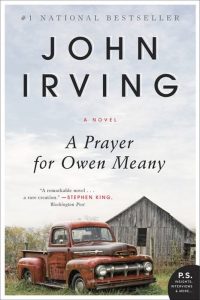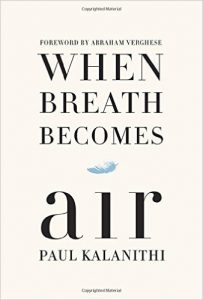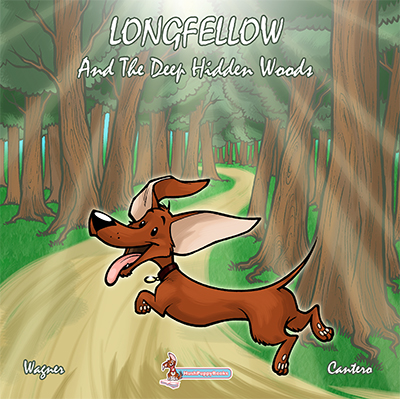What bereaved survivors wish they’d known about the grieving process

[B]ereaved people often brace for the so-called stages of grief, only to discover their own grieving process unfolds differently. The stages of grief — popularized from earlier theories put forth by Elisabeth Kübler-Ross in her 1969 book On Death and Dying, and later modified by others — initially described responses to terminal illness: denial, anger, bargaining, depression, acceptance. While some find those responses relevant to coping with death, psychologists increasingly believe that the idea of “stages” oversimplifies a complex experience. And grieving survivors seem to agree.
“When we’re confronted with emotional chaos, we yearn for clarity, and the Kübler-Ross stages of grief serve as a kind of road map,” says Robert Neimeyer, a professor of psychology at the University of Memphis who studies grief. “But it’s more accurate to think about phases of adaptation rather than stages of grief. And they overlap rather than fall in sequence.”
No two people mourn the same way. The grieving process is shaped by one’s relationship to the deceased and the nature of the death, Neimeyer says. For example, “non-normative losses” — sudden or untimely deaths (accidents, homicides, deaths in youth or life’s prime) — tend to trigger more intense anger and disbelief, and longer depression.
What all survivors share: Death presents challenges, from processing the loss and coping with grief symptoms through reformulating a relationship to the late loved one — tasks that can take months and years to work through.
Grief task #1: Acknowledging the Reality of Loss
The finality of death is always a shock, even after a known terminal illness. After helping her 62-year-old husband battle a brain tumor for four years, Maureen McFadden thought she’d girded herself for his eventual passing. “A nun warned me that for all the pain I’d already gone through, I would not be prepared for what grief is. She was right,” says the Brooklyn, New York, widow. “Even though I understood the outcome when he was first diagnosed, I had no idea that I was still hoping. When someone dies, you’re just not prepared for that, because humans don’t know how to live without hope.”
It wasn’t until after the busy period of nursing, funeral planning, and the memorial services that the truth struck — “as if I’d been shot,” McFadden says. Later, one of her husband’s physicians told her that people who are constantly at a dying loved one’s side often have the hardest initial response. “He said they seem to hold an unarticulated belief that just by virtue of their presence and determination, they will keep the person alive,” she says. “The eventual death seems like a terrible failure.”
Accepting that death is real (and not your fault) isn’t the same as being OK with it. It merely means absorbing the truth of what has happened. This can be as difficult and painful as smacking through the first high breakers at the ocean’s shore. For some people, acknowledgment happens quickly; others remain in disbelief for months or years (or experience disbelief in periodic bursts).
What helps:
Experiencing the rituals of death. Lise Funderberg and her sisters allowed someone else to organize a quick memorial service because “we were so out of it, floating in Jell-O.” Looking back, she wishes they had done it themselves. “We didn’t even put anything in the papers. I wish we had known how a ritual of closure is really important for everyone in the community of the deceased, everyone who loved him,” says the author of Pig Candy: Taking My Father South, Taking My Father Home. “It’s not like we would be doing another one.”
Knowing there are no shortcuts through grief. “Grief can begin even before death, during caregiving. But grief doesn’t end until we do,” says Sherry E. Showalter, a social worker in Tarpon Springs, Florida, who’s the author of Healing Heartaches: Stories of Loss and Life.
Practicing your faith traditions. Some research shows that survivors with a spiritual life tend to absorb grief more quickly, possibly because — psychologists believe — people who eventually find meaning in loss are generally better able to cope with it.
Grief task #2: Weathering the stress of separation
Mourning brings many physical and emotional hallmarks: crying, being unable to cry, sleeplessness, not eating, numbness, feeling forlorn, withdrawing socially, and so on. The exact mix is different for everyone.
Anger is a common response, especially to a violent or untimely death. “My anger was so primal and intense, that this good person, my dad, had to die. It was illogical. I was mad at the world. I even thought, ‘Why couldn’t it have been my mom?’ who was already sick and not a contributing member of society,” says Harriet, a San Francisco producer whose father died at 69 after a cancer diagnosis.
Intense emotions can be a way to “hang on” to the deceased person, bereavement counselors say. It’s a tangible connection to the person who died. “It feels like power, like life,” one widow says of her white-hot anger. Letting go of the emotion, or learning to live with it, can feel like letting go of the person who died. Naturally, there can be a built-in reluctance to do that.
Another confusing emotion: Relief. “I felt horribly guilty that I was so relieved when my mom died,” says the daughter of an alcoholic. Caregivers, for example, often feel surprise (and, in turn, guilt) that they feel a lifting of a physical and/or emotional burden when caregiving ends. This is a natural response that’s separate from the sadness of losing the person. It’s entirely possible, and normal, to feel two such different emotions at the same time.
What helps:
Letting yourself experience turbulent emotions rather than shutting them down. “Wallowing is good,” says Cherie Spino, a mom of four in Toledo, Ohio, whose mother was killed at age 69 by a drunk driver. “You have to go through it, dwell on the person and your sadness, cry.”
Redirecting anger. Within a few years of her dad’s death, Harriet, the producer, “used my rage to fuel my passion” for a new project about cancer.
Asking what the deceased person would suggest. Maureen McFadden, whose husband died of a brain tumor, says she partly transitioned out of anger when the thought struck her, “What would Jim want from me?”
Reading about others’ experiences. Literature about grief can point out common threads. Survivors often point to Joan Didion’s The Year of Magical Thinking and A Grief Observed, by C.S. Lewis.
Seeking bereavement support. Professionally led support groups or individual counseling provide skilled guidance as you navigate confusing or painful emotions. The goal isn’t to make the feelings go away but to help you embrace their purpose. Some people are ready immediately for this kind of help while some come to it long after the loss, and others do fine on their own.
Grief task #3: Adjusting to Everyday Life After a Loss
After the funeral and burial, mundane life patterns such as shopping and working must eventually resume, now in altered form. “Everyday life” often leaves survivors experiencing long-term reactions on top of the more familiar emotional and physical manifestations of grief.
Most common: yearning (intense longing for the person who has died), stress, and depression. These can prevail whether the relationship was happy or turbulent.
“Whatever unresolved issues you have, they get magnified and are elusive at the same time; you feel alone in the world,” says Ellie, whose parents and sister all died within five years. “I felt so isolated in my grief.”
What helps:
Not rushing yourself. “Being without my parents knocked me down and kept me down for a long time; it was as if something had been severed in me,” says Ellie. “Time and new experiences helped, but it was mostly a matter of putting one foot in front of the other.”
Ignoring the “grief police.” Don’t let others rush your adjustment. Turn a deaf ear to the well-meaning comments people make that miss the mark — including “It’s time to move on.”
Getting help as needed with practical tasks. Handling finances, cooking, yard work, and so on can swamp a bereaved person, especially if they’re unfamiliar duties. This just adds to stress and prolongs pain.
Inching toward new ways of doing things. One woman who had a standing Saturday morning long phone call with her late mother felt bereft at that hour each week. “I switched my walking time to then and called my sister while I walked, which shook up my routine and dulled the pain.”
Not expecting you can medicate the pain away. Antidepressants have a place in helping someone who has a chemical imbalance causing depression. But antidepressants can also impede the grieving process, and they can’t remove the yearning that’s associated with depression. The goal should be to think about the deceased with less pain, over time, and to derive a measure of comfort from such thoughts.
Grief task #4: Revising your relationship to the deceased
Your relationship to the person who died doesn’t end with his or her death; it changes. “The goal of grieving is not to let go but to find a way to hold on with less pain,” Neimeyer says.
Simon Ruben of Israel’s University of Haifa describes the grieving process as being “two-tracked,” with two processes happening simultaneously. On one track, we cope with the visible symptoms and emotions (anger, depression, sleeplessness, and so on). On the other track, less obvious but equally important, we’re working to reframe our relationship to the loved one who has died.
Nobody forgets a loved one. The question is, how do we hold him or her in our memory, our rituals, and our conversation in a way that’s manageable, possibly even comforting, rather than painful?
What helps:
Reminiscing aloud. “Loss is so taboo in American culture. You’re supposed to have a funeral and move on,” says Jennifer Amandari of Los Angeles, who lost her mother when she was 16 and then lost an infant daughter six years ago. “But not talking about the person stunts your ability to heal and work the loss into your life.”
Having your grief witnessed. When psychologist Robert Neimeyer’s teenage son got choked up at Thanksgiving on realizing he was seated in his late grandmother’s chair, the table conversation came to a halt. Rather than rushing the awkward moment, someone shared his own memory of her. “We all began to recall ‘Gloria stories,’ and it was a beautiful moment that allowed us to continue a connection to her,” Neimeyer says.
Reflecting on the legacy of the person who died (alone or with others). How did he or she inspire you? What was his or her life’s meaning and purpose? Questions like these help shape a perspective on the seeming meaninglessness of death.
Following rituals that celebrate or honor the deceased. Victorians made an art of the rituals of remembrance, from wearing black and jewelry made from the hair of the deceased to producing funeral cards and postmortem photography. Such traditions help survivors maintain a connection and continuity. Family members join Lisa Byers of Toledo, Ohio, on an annual visit to the grave of her late husband, who died of a heart attack at age 46. Patti Anderson, who lives in Cincinnati, joins her out-of-state sisters in annual trips for their mother’s birthday. They’ve turned it into a memorial to her, complete with a special dinner devoted to reminiscing. Another family sends balloons aloft on the anniversary of their father’s death — followed by a dinner at his favorite restaurant.
Creating a memorial. Cherie Spino and her sisters plan to make a wall hanging from scraps of their mother’s clothing that they’d saved. Others have found solace in creating scrapbooks or PowerPoint presentations with old photos, symbolically lighting a Caring candle and posting a dedication, or planting a tree or garden.
Grief task #5: Rewriting the storyline of your life
“Grief is more than an emotion; it’s a process of reconstructing a world of meaning that’s been challenged by loss,” psychologist Neimeyer says. When our life is closely entwined with another’s, and that person dies, it’s as if a main character in a book dropped out. How can future chapters be rewritten so the book makes sense?
And yet there must be a rewrite, because life is a narrative. An important part of grieving is to gain a perspective on the meaning of the loss and to reconstruct a world in which you can live effectively afterward. Who will now do the things that your loved one once did for you? Who will you confide in about your promotion or your child’s first steps? Will you ever be able to walk into a hospital or nursing home again? Be able to love again? How has the meaning of your life changed?
One challenge: This involves integrating the reality of death into a cultural system that likes to pretend death doesn’t exist.
What helps:
Finding compassion in the workplace, one’s place of worship, and social organizations. It can be incredibly useful to reintegrating into life after a loss to have it acknowledged, rather than ignored without comment. Example: a manager stepping forward to say, “I’m sorry for your loss; let’s talk about what you feel like tackling now.”
Putting your life story on paper. Neimeyer has his patients write the chapter titles of their life stories. Then he asks them to reflect, in writing, on specific questions: How did you organize the flow of your self-narrative? What are the major themes that tie it together? If you were to give a title to your self-narrative, what would it be?
Recognizing that you’re not the same person as before. Losing any loved one is a transformative experience. Expect and embrace change, rather than avoiding it and expecting to return to your “old self.”
Expecting the intensity of your grief to vary. “Whenever I go to a funeral, I cry and cry now — for my own loss,” says one woman. Mother’s Day, birthdays, and anniversaries can ignite surges of depression years later — or there may not even be an obvious trigger.
Being open to help. It’s worth noting that there may be a syndrome called complicated grief, in which grief reaches a point where therapy can be useful. Is prolonged grief a new psychological disorder? Many psychologists now think so and want to see it become a recognized disorder. But more relevant than labels is being open to help if you feel stuck.
A “Happy” Ending?
Important point: Completing these five tasks doesn’t “end” the grieving process. They may never be fully completed. Grief isn’t a disease, after all; it’s a transition.
“Grief is like a room we may enter or leave again and again, for years,” psychologist Robert Neimeyer says. “The character and quality of grief may change across time, but it remains available to us as a resource that we can revisit.”
That positive word, resource, is a deliberate choice: “Being able to revisit earlier losses and their implications for us can enrich our lives and make our narrative more coherent about who we are and how we got to be who we are,” Neimeyer adds.
“I still feel such a sense of loss,” says writer Lise Funderberg of her father’s death in 2006. “But qualities of that experience were incredibly moving — the compassion and charity shown to me and witnessed by me. It’s strange to hold two opposing ideas in your head: that an experience can be horrible and yet have good effects. Things were stirred up by my dad’s dying that are pretty incredible and life-affirming. I now know that if you’ve loved a person, you will always grieve them. It just changes over time.”
Complete Article HERE!

















